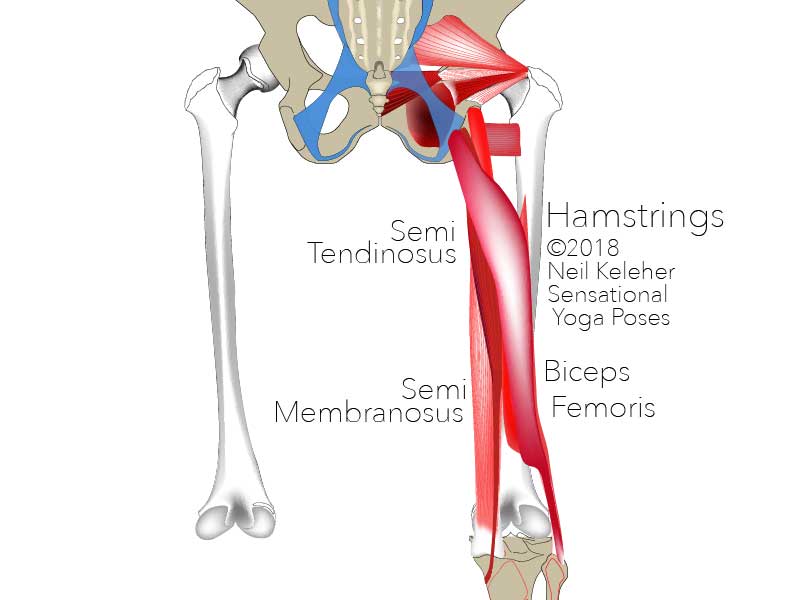Biceps femoris and outer hamstrings pain
Understanding the actions of the biceps femoris so that you can work towards alleviating hamstring pain
The biceps femoris is a two part muscle that runs down the back of the thigh, one part the long head, runs from the sitting bone to the top of the fibula. The other part, the short head, runs from the back of the femur to the top of the fibula.
The long head crosses both the hip and the knee while the short head crosses only the knee.
For myself I've had slight pain with my left biceps femoris. How do I know it's the biceps femoris and not the inner hamstrings (the semitendinosus or semimembranosus)? Because the sensation, the discomfort, runs along the outside of the back of the thigh.
Why activating the gastrocnemius may be one way of dealing with hamstring discomfort
Now because I've been playing around with interactions between the calf and the hamstrings, my primary thought was that I needed to activate the outer head of the gastrocnemius, since the tendons of this muscle intertwine with those of the hamstrings.
A general suggestion for activating the hamstrings more easily is to activate the calf muscles, particular the gastrocnemius.
I'd forgotten that because the biceps femoris attaches to the fibula, that there is another way to deal with poor biceps femoris function.
The biceps femoris creates an upwards pull on the fibula
With respect to the fibula, standing reasonably upright, the biceps femoris, when active, creates an upwards pull on the fibula.
In bent knee positions the hamstrings creates a rearwards pull on the fibula
In bent knee/hip positions like warrior one or split lunging, it creates more of a rearwards pull on the fibula, helping to control rotation of the shin at the knee.
Anchoring the biceps femoris via the fibula
In order to give the biceps femoris an anchored end point, one possible solution is to activate the peroneus longus.
This muscle attaches from the fibula and passes the outer edge of the foot. It in turn can be anchored by pressing down through the outer edge of the foot.
The interesting thing about peroneus longus activation is that the sensation it generates is quite high up, just below the knee and it seems to coincide with a contraction of tibialis posterior.
Standing with the foot stiffened it seems possible to keep the peroneus longus activated, both when pressing down through the outer edge of the foot and also when lifting it.
In either case the muscle is working against opposing muscles to stiffen or stabilize the foot as well as control it.
With respect to the biceps femoris, the peroneus longus creates a downwards pull on the fibula which in turn anchors the bottom end of both heads of the biceps femoris muscle so that both can activate or relax as required.
How the hamstrings can help control knee bend
Note that with respect to the knee, the hamstrings as a whole tend to cause the knee to bend. The vastus muscles oppose this tendency.
The outer hamstrings help control knee rotation
Working together these muscles can control knee bend.
Assuming that's the case another point to consider is the outer hamstrings tend to cause the shin rotate outwards relative to the femur.
Stabilizing against knee rotation to alleviate knee pain
One muscle that can work to internally rotate the shin relative to the femur is the sartorius muscle.
One possibility is that with knee bent controlled, the sartorius and outer hamstrings can work against each other to stabilize (or control) shin rotation relative to the knee.
And so anchoring the outer hamstrings via the peroneus longus may be one way of dealing with some sorts of knee pain, particular if it seems like the sartorius is to blame. By activating the peroneus longus so that the outer hamstrings can activate, the hamstrings can then give the sartorius an opposing force to work against. These muscles can then work together to helps stabilize the knee and help prevent knee pain.
Published: 2020 04 17



